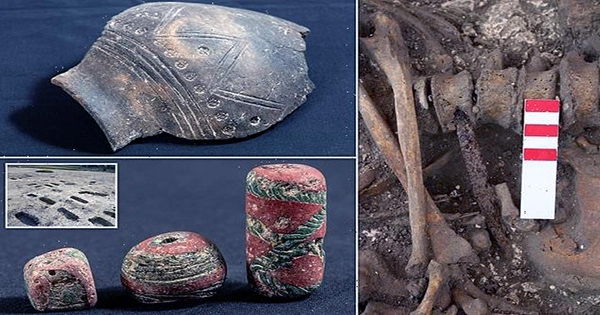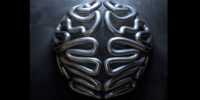The HS2 high-speed rail connection project is a fast-moving infrastructure project that aims to link London and the North-West with high-speed train lines. While the initiative is focusing on the future, it is also disclosing historical mysteries. Over 1,000 archaeologists have been hired to excavate more than 60 sites, and they recently discovered an important national find at Wendover, Buckinghamshire: 141 Anglo Saxon burial sites dating from the 5th and 6th centuries. The sites are rich in high-quality burial goods, indicating that they were most likely the final resting places of affluent Anglo-Saxons.
The finding will contribute to our knowledge of how people in Anglo-Saxon Britain lived by filling in gaps in the historical and archaeological record. Evidence of Neolithic, Bronze Age, Iron Age, and Roman activity was also found, indicating that the site had been occupied for a long time. The Anglo-Saxon burial field, which had 138 tombs with 141 inhumation burials and 5 cremation burials — one of the biggest ever discovered in Britain – was the most noteworthy. The work was completed in 2021 by a team of approximately 30 INFRA JV field archaeologists working on behalf of HS2’s Enabling Works Contractor, Fusion JV.
“As we reach the completion of our archaeology fieldwork on Phase One of HS2, we’re only scratching the surface of how the finds can advance our understanding of British history.” HS2 Ltd’s Lead Archaeologist, Mike Court, stated in a statement. “The archaeological discoveries found at this site near Wendover will be of interest not just to the local community, but also to the rest of the country, offering a vital insight into life in Anglo-Saxon Britain.”
At the location, men, women, and children were discovered — it is unusual to uncover such a big number of people in a cemetery. Almost every person was buried with a wonderfully designed brooch. Over 2,000 beads, 89 brooches, 40 buckles, 51 knives, 15 spearheads, and seven shield bosses were among the other discoveries. An exquisite glass bowl presumed to be a Roman-era heirloom, a silver “zoomorphic” ring, various copper alloy rings, iron belt fittings, and ivory artefacts were discovered in the possession of one female high-status figure.
The gifts buried with each individual were custom-made for them, which was likely important to the mourners at the cemetery site. Ear wax removers and a cosmetic tube that may have been used as a container for eyeliner or something similar were discovered. “This site has enormous historical and archaeological relevance for our knowledge of Anglo-Saxon Britain.” It’s not a location I’d ever expected to come across — discovering just one of these tombs would have been incredible, but finding so many is incredible.” Fusion JV’s lead archaeologist, Rachel Wood, explained.
“The close closeness of this cemetery’s dating to the end of the Roman Empire is very interesting, especially because it is a time about which we know so little. The tangible artifacts, as well as the people themselves, will reveal a great deal about the individuals who lived during this time.” One skeleton that of a 17-24-year-old guy, had a sharp iron item implanted in its spine, perhaps causing an untimely and violent death.
The sword is assumed to have been stabbed in the front of the victim before lodging in the spine. This person’s collarbone was likewise stained blue from a brooch that had been placed there. There will be further reviews and studies of the works in the coming years, which should give greater insight into the Anglo-Saxon world.














